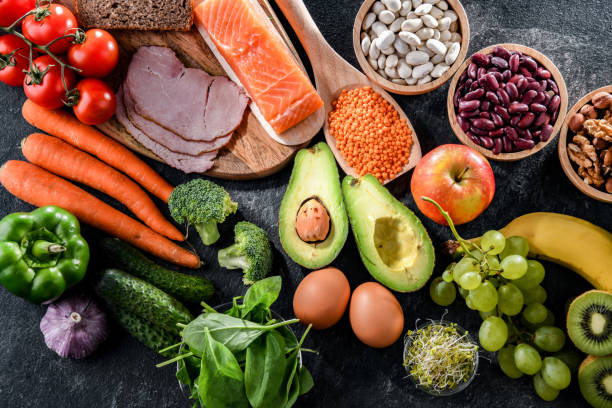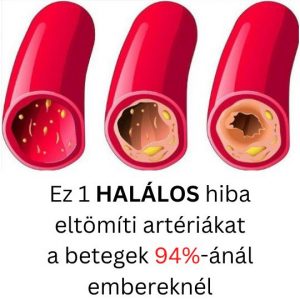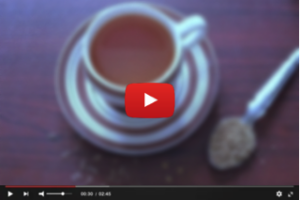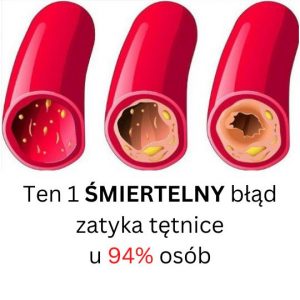The #1 Rated Blood Sugar Formula
High blood pressure: Could diet replace medication?

The DASH diet is a healthy-eating plan designed to help treat or prevent high blood pressure (hypertension). The DASH diet includes foods that are rich in potassium, calcium and magnesium. These nutrients help control blood pressure. The diet limits foods that are high in sodium, saturated fat and added sugars.
When it comes to lowering blood pressure, a low-salt, heart-healthy diet may be just as effective as medication. This is the conclusion of a new study recently published in the Journal of the American College of Cardiology.
Research about Hypertension
All About Blood Pressure
Blood pressure is the force of blood that pushes against the walls of the arteries. It is measured in millimeters of mercury (mm Hg), and it is assessed using two numbers: systolic (the top number) and diastolic (the bottom number). Systolic blood pressure refers to the force of blood pushing against the artery walls when the heart beats, while diastolic blood pressure refers to blood pressure between heartbeats. High blood pressure occurs when this force becomes too high. If uncontrolled, it can increase the risk of heart disease, heart attack, and stroke.Lifestyle for healthy blood pressure
Lifestyle changes, such as increasing exercise and adopting a healthful diet, are considered key for lowering blood pressure, but some individuals may also be prescribed antihypertensive medication. The new study, however, suggests that the DASH diet — in combination with a low salt intake — could eliminate the need for medication for some adults with hypertension.Systolic blood pressure and diet
The study included 412 adults between the ages of 23 and 76. At study baseline, all the participants had a systolic blood pressure of 120–159 mm Hg and a diastolic blood pressure of 80–95 mm Hg. None of the subjects were using antihypertensive medication. Based on their systolic blood pressure, the subjects were allocated to one of four groups. These were: 120–129 mm Hg, 130–139 mm Hg, 140–149 mm Hg, and 150 mm Hg or greater. Under new guidelines released earlier this month, having a systolic blood pressure of 120–129 mm Hg and a diastolic blood pressure below 80 mm Hg is categorized as “elevated” hypertension. A systolic blood pressure of 130–139 mm Hg or a diastolic blood pressure of 80–89 mm Hg is classed as stage 1 hypertension, while a systolic blood pressure of 140 mm Hg or higher or a diastolic blood pressure of 90 mm Hg or higher is categorized as stage 2 hypertension. For a total of 12 weeks, all participants were randomly assigned to the DASH diet or a control diet, which was comparable with a standard Western diet.The DASH diet
Supported by the National Heart, Lung, and Blood Institute — is an eating plan consisting of fruits, vegetables, whole grains, nuts, beans, fish, poultry, and fat-free and low-fat dairy products. The diet limits foods high in saturated fat and sugar. Over 4-week periods throughout the study, subjects were also randomly assigned to three different levels of sodium intake: 50 millimoles per day (low), 100 millimoles per day (medium), or 150 millimoles per day (high). For context, 100 millimoles of sodium per day is equivalent to 2,300 milligrams of sodium, or just under one teaspoon of salt. This is the maximum daily sodium intake recommended under the 2015–2020 Dietary Guidelines for Americans.Outstanding’ results
The team found that individuals who had a baseline systolic blood pressure of 150 mm Hg or higher saw their systolic blood pressure fall by an average of 11 mm Hg after 4 weeks of the DASH diet, compared with those on the control diet. Participants with a baseline systolic blood pressure of under 130 mm Hg experienced a 4 mm Hg reduction in systolic blood pressure with 4 weeks of the DASH diet. Combining the DASH diet with low sodium intake, however, appeared to produce better results.DASH diet and low-salt plan
Individuals who had a baseline systolic blood pressure of less than 130 mm Hg saw a 5 mm Hg reduction in systolic blood pressure after following the DASH diet and a low sodium intake for 4 weeks, compared with those on the control diet who had a high-sodium intake. Adults whose systolic blood pressure was 130–139 mm Hg at study baseline experienced an average reduction of 7 mm Hg in systolic blood pressure with the low-sodium, DASH diet. For subjects with a baseline systolic blood pressure of 140–149 mm Hg, systolic blood pressure fell by an average of 10 mm Hg after 4 weeks of the combined DASH diet and low-salt plan. However, the most surprising result was found for adults whose baseline systolic blood pressure was 150 mm Hg or higher. They experienced an average systolic blood pressure reduction of 21 mm Hg with the low-sodium, DASH diet, compared with those following the high-sodium, control diet. Juraschek hails this finding as “outstanding;” it indicates that people at the greatest risk of severe hypertension reaped the greatest reward from a DASH diet combined with low sodium. The researchers note that further studies are needed to determine whether or not such an eating plan can help to lower blood pressure for people with a systolic blood pressure of 160 mm Hg or greater, as they were not included in this research. Still, Juraschek believes that their “results add to the evidence that dietary interventions are as effective as — or more effective than — antihypertensive drugs in those at highest risk for high blood pressure, and should be a routine first-line treatment option for such individuals.”“What we’re observing from the combined dietary intervention is a reduction in systolic blood pressure as high as, if not greater than, that achieved with prescription drugs. It’s an important message to patients that they can get a lot of mileage out of adhering to a healthy and low-sodium diet.”Senior study author Dr. Lawrence Appel, Johns Hopkins University School of Medicine
alternative medication for high blood pressurecure to high blood pressureDash dietDash Diet and Low Sodiumdietary approach to stop hypertensionEat a heart-healthy dietLifestyle for healthy blood pressureLifestyle Modifications to Reduce Blood PressureNatural Hypertension RemedyRemedy for lowering blood pressure








